Growing healthy fruit trees are worth it – especially when harvest time comes and there are fresh and delicious varieties of fruit. If trying to troubleshoot a problem with fruit trees or learning what it takes to successfully grow them, then this is the right place to find help.
To keep fruit trees healthy, make sure to water them regularly, give them adequate sunlight exposure, add mulch, fertilize annually, prune carefully and use measures to control pests and diseases.
There is a lot more to learn about taking care of fruit trees, and we have some fantastic information in the following article. In order to ensure that the most important information is found, we have listed these tips under different planting scenarios and growth stages.
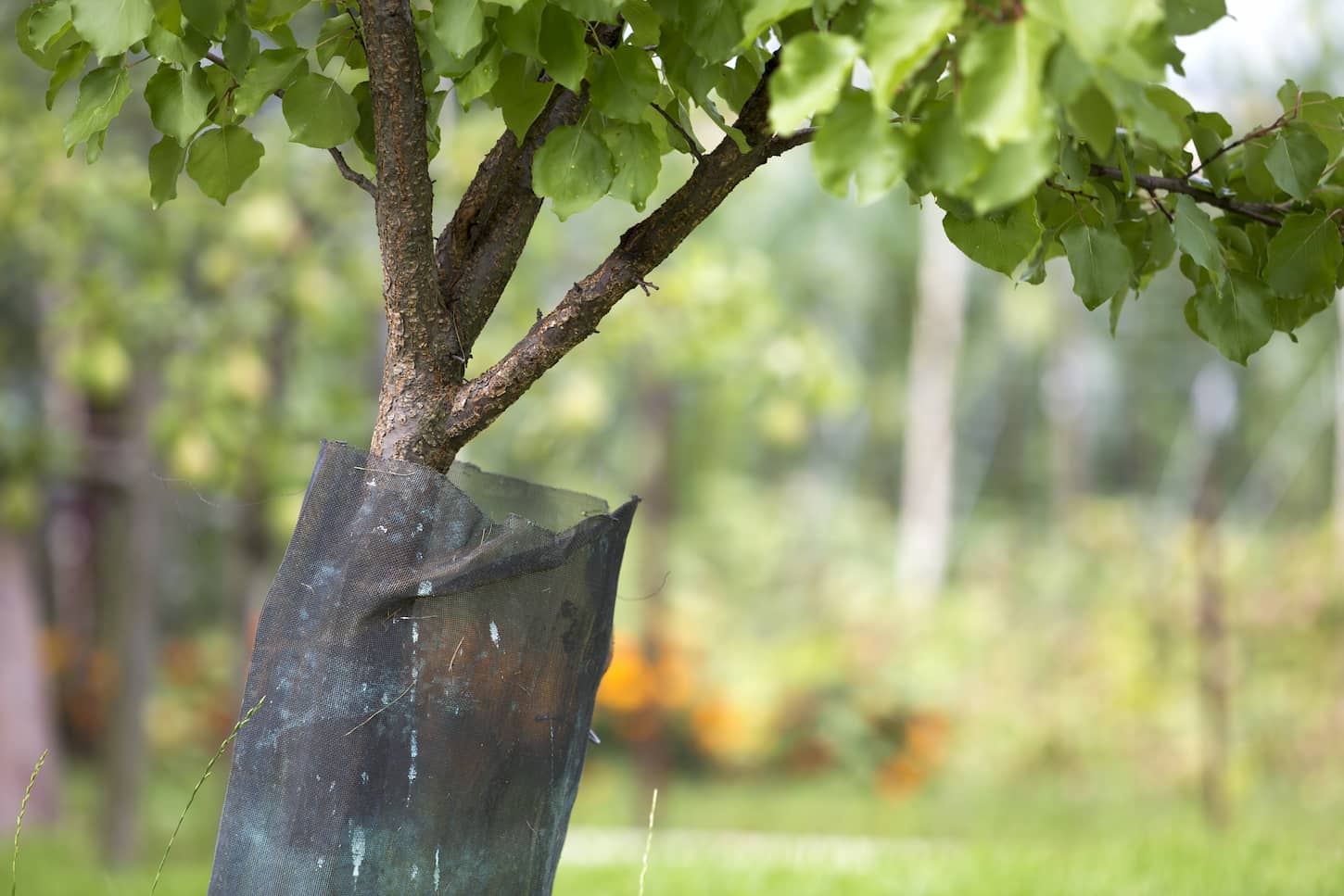
How Do You Care for Young Trees That Are Less than Two Years Old?
Taking proper care of fruit trees during the early stages of their development will save them from problems when they’re grown, but it is still possible to miss a couple of steps despite applying basic gardening practices. So, below are all the essential tips needed to care for young fruit trees.
Tip #1: Only use a new planting site if absolutely necessary
Use a planting site that has been previously worked on, and that has been well established. Make sure the crops that were previously planted did not have diseases that would affect future fruit trees.
For example, a site that previously had a disease like verticillium wilt in a crop should not be used to grow fruit trees. If you have to plant the trees in the same place that had this fungus, make sure to use cultivars that are resistant to the disease.
Want to know if you can plant fruit trees in clay? I answer it here: Do Fruit Trees Grow Well in Clay Soil?
Tip #2: Plant on raised beds in the absence of a suitable planting site
Fruit trees need to grow in soil that is well-drained in order to produce good crops. The best bet for a gardener in this dilemma is to make use of raised planting beds. This option will cost less and is super easy to maintain. Here are some inexpensive ideas to try:
Plant a cover crop before establishing an orchard so that weeds will be reduced, organic matter can increase, and proper soil drainage can be attained. Plants like rye or wheat make good cover crops. They should be planted in late summer or early fall.
Oats also make great cover crops – and when they are planted at the same time as the rye or wheat crops, will grow in the fall. If left alone they will die over the winter and leave behind dead mulch on the soil’s surface.
Pro gardener fact: Planting buckwheat as a summer cover crop before planting any winter cover crop can improve the soil’s structure immensely.
Control certain parasitic nematodes with specific plants to safeguard the trees from pests and diseases. Plants such as Sudan grass, marigolds, or oilseed rape when planted in soil affected by parasitic nematodes can go a long way in improving the condition of the soil.
Kill weeds with post-emergent broad-spectrum herbicides. These herbicides do a great job of eliminating perennial weeds and killing existing vegetation without leaving any residue in the soil. These weeds can also be eliminated by using black plastic to cover the site one year before planting.
There are a lot of pests and other reasons why fruit trees get sick and die. Don’t miss reading this article I wrote: 40+ Reasons Your Fruit Trees are Dying (with Fixes).
Tip #3: Employ the use of a moisture meter
To help establish newly planted fruit trees properly in the soil, it’s important to water thoroughly to eliminate all air pockets.
When the foliage of fruit trees droops, it means that they aren’t getting enough water. So, in order to ensure the fruit trees receive an adequate amount of water, employ the use of a moisture meter. This can be bought at any garden center or any credible online outlet for about ten dollars.
Using a moisture meter is pretty easy – simply insert it into a couple of spots on the drip line. Check the soil 18 and 36 inches away from the tree trunk after clearing the mulch away first. Checking the soil at different depths provides a more accurate reading.
Water the fruit trees at sunrise from the drip line out – up to about 1 or 2 feet away. Do this until the moisture meter reads moist. During the growing season, readings need to be taken at least once a week.
If a moisture meter isn’t available, do the following instead: every week of the season when there is less than an inch of rainfall, pour 5 gallons of water around the bottom of the trees. Too much moisture on the trunks can lead to fruit tree diseases, like mold and fungal growth.
Tip #4: Avoid planting too deeply and prune immediately
Planting a tree too deep or close to the surface can cause serious damage to the fruit tree. As a matter of fact, it takes a tree a few planting seasons to die off from the wrong planting depth.
When planting, make sure the root near the top is planted 2 inches below ground level. Once this has been done, proceed to prune the young fruit tree. At about 3 feet of height, cut the top of the fruit tree off.
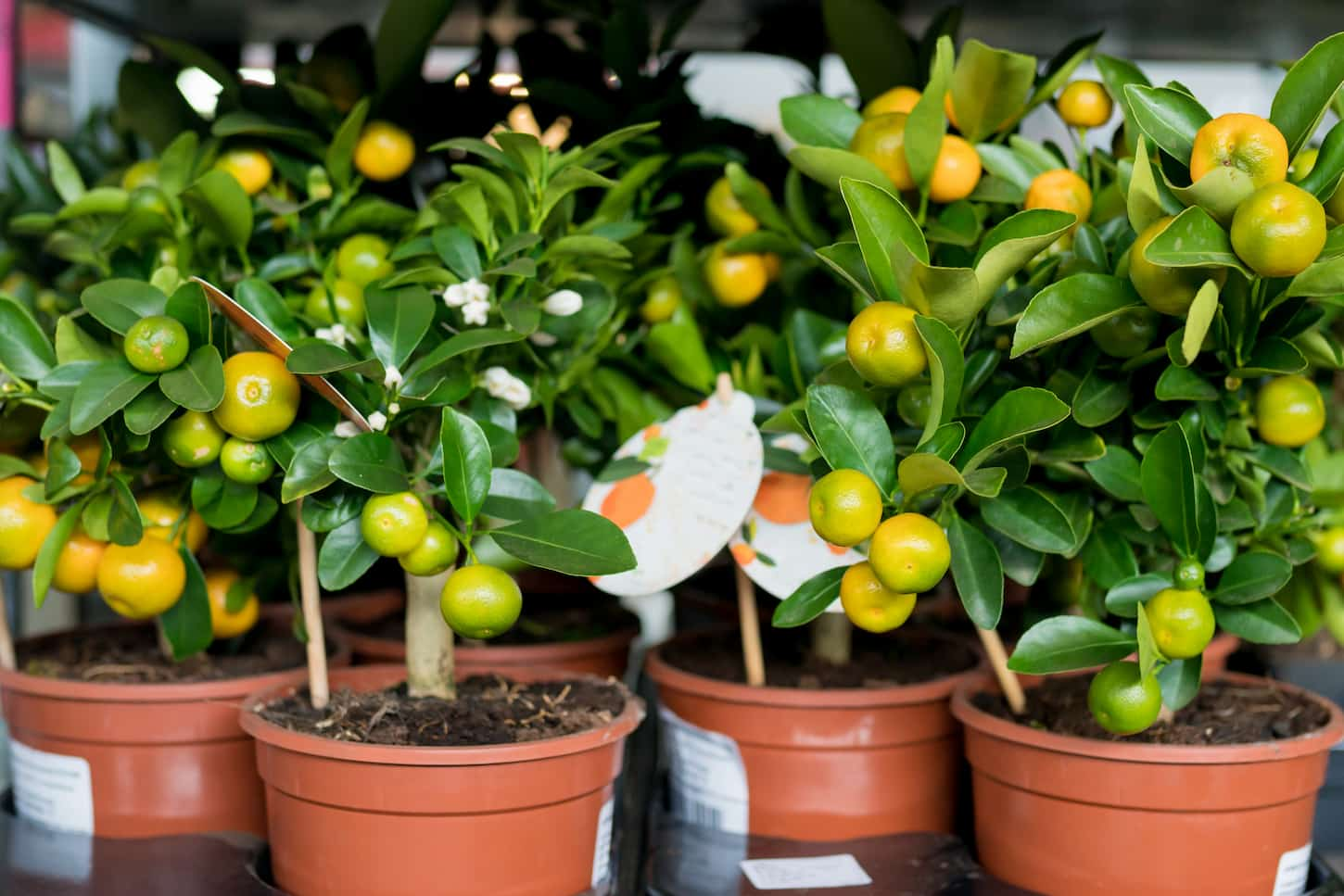
Growing Your Fruit Trees in a Container
Fruit trees grown in containers don’t bear as much fruit as trees in the garden. They are great for urban dwellers who live in places like apartments with very little space. For better growth outcomes, pick dwarf trees, because they are well suited for growth in a container.
Here are some tips that will help with caring for container-grown fruit trees:
Tip #1: Make sure there are enough drain holes
There need to be about 3 to 8 drain holes for a flowerpot that is about 4-12 inches in diameter. If the container is 12 inches or less, then each drainage hole should be about one-quarter inch in size. The hole should be one-half inch for containers above 12 inches in diameter.
Adequate drainage is crucial to fruit trees grown in containers, so make sure to put large gravel, broken clay pots, or stones at the bottom of the planter in order to prevent any blockage of the drain holes.
The planter should have enough space for the fruit tree roots to spread out and grow, about the same depth as the container (12 to 16 inches). Anything deeper than the specified units can be corrected by adding a false bottom.
Polyurethane or glazed ceramic pots are the best for growing fruit trees. Plastic containers are okay as well, but steer clear of the ones with red rims as they are quite fragile. Be careful when using self-watering planters on plants because their bottom-up watering system isn’t reliable.
Tip #2: Make use of soil mixes specially formulated for containers
Filling a planter or flower pot with soil straight out of the garden can expose the fruit tree to diseases. Garden soil lacks moisture control, aeration, drainage, and nutrients necessary to support a container-grown plant – so potting soil is the best option for these types of plants.
Use a soil mix that is half peat moss and half topsoil – and add some compost to the soil. Make sure to water the fruit trees thoroughly after planting. Reduce the amount of watering at the end of the summer. In winter don’t water the trees as much since they do well with dry soil in the cold.
Tip #3: Train your fruit tree roots
The root system of a fruit tree won’t adapt well to limited spaces. Some work must be put in to get them used to the boundaries of planters or flowerpots – this is called root training.
Every container-grown plant must have its roots trained in order to keep the tree from becoming rootbound (the spread of roots out of the drain holes – or in some cases over the lip of the planter). The roots can be trained by doing either of the following:
- Changing the pot of the fruit tree to a larger one.
- Pruning the fruit tree’s roots and returning them back to the pot.
Here’s a quick how-to guide for root training:
- When re-potting the fruit tree, water the soil the day before to make the uprooting process easier. Lay the fruit tree down sideways on a tarp, then use a hand shovel to loosen it from the soil by scraping off the soil.
- Once the fruit tree has been extracted, comb through its roots making sure to remove broken or odd roots. Then proceed to move it to a pot 25% larger than the last one.
- When pruning the roots of the tree, gently pull the tree out of the pot. If it is difficult to remove, use a knife to cut around the roots. Use a saw to cut 1/3 of the fruit tree’s root mass from the bottom. Some side root mass will also need to be trimmed in order to allow space for new growth.
- Remove excess top roots, then pour some damp potting soil into the pot. Once this is done, the tree can be planted back into the pot, and be filled with good potting soil. Make sure to add some mulch to the surface of the soil and prune the tree branches.
Want to know when the best time to prune fruit trees is? Gotcha covered. Can You Prune Fruit Trees in Summer or in the Fall?
Tip #4: Plant a suitable groundcover underneath your fruit trees
Both garden and container-grown fruit trees can benefit immensely from groundcovers. These low-growing and spreading plants provide your soil with most of the benefits mulching provides, but unlike mulch, they are very much alive.
Choose a ground cover plant with a shallow root system, so that they don’t end up overtaking your fruit tree roots and stealing all of the nutrients and water.
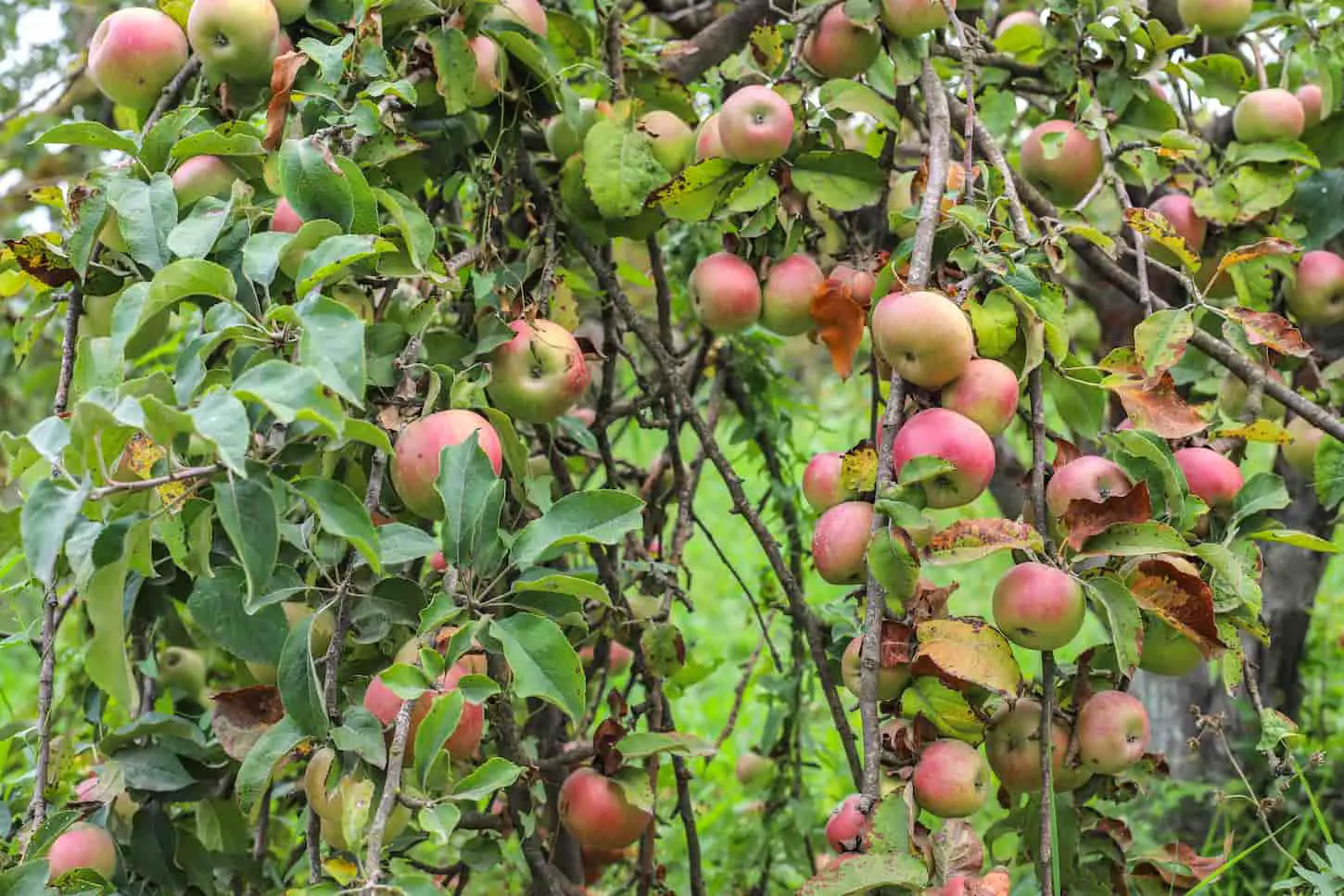
How to Mulch Fruit Trees
Mulching is very important for the survival of fruit trees. It will help minimize moisture loss, reduce weeds, regulate soil temperature, control erosion, improve soil structure, and provide the essential nutrients plants need to grow healthy and strong.
Here are some useful tips for mulching your fruit trees:
Tip #1: Make use of organic mulch
Organic mulch is made of animal and/or plant materials that were once living. This includes newspapers, woodchips, bark, straw, hay, and grass clippings. There is a lot to gain from using mulch materials that are biodegradable and natural.
Fruit trees need all the nutrients and support they can get. Applying a mulch made of organic material is a good way to ensure healthy trees. Here’s how to efficiently make use of organic mulch to get the best results with fruit trees.
Plan on mulching fruit trees with 6 to 8 inches of hay or straw in May. Fruit trees need to be mulched regularly, and it’s important to clean up the mulch toward the end of August or at the beginning of September so that the trees are winter-ready.
Got alpaca manure? Here’s How to Fertilize with Alpaca Poop: The Complete Guide.
Tip #2: Do not pile mulch around the base of the tree
Keep mulch about 6 to 8 inches away from the bark of the fruit tree and no deeper than 7.6cm (3 inches) below the soil. Too much mulch piled around the trunk of fruit trees can lead to rotting disease. It may also lead to the tree taking root in the mulch rather than the soil.
Tip #3: Mix mulch types for better results
There are different varieties of mulch that have separate functions. For example, straw serves as a heat insulator and reduces slug activity, and newspapers suppress weeds by blocking sunlight. Leaves provide the organic matter in the soil and broken down cardboard attracts earthworms that eat insects.
When combining mulch materials it’s important that no one ingredient is more than 10 -20% of the final volume. Here are some mulch combinations to try out:
- Woodchips, cedar hearts, and sawdust can be ground up and used as mulch. They help repel insects, eliminate weeds, and retain soil moisture.
- Creating fine mulch out of pine needles and leaves will provide the soil with essential nutrients and support.
- Dried grass clippings, shredded leaves, or straw on top of newspaper layers is a mulch mixture that is also super beneficial to your backyard orchard.
- Newspapers and woodchips are also a great mulch combination – both are biodegradable and help fruit trees thrive.
- Inorganic and organic materials such as pine needles and bark chips can also be combined.
- Mix strips of anchor fabric with rocks, making sure to pull the fabric close around the bottom of the trunk and pin it down with the rocks.
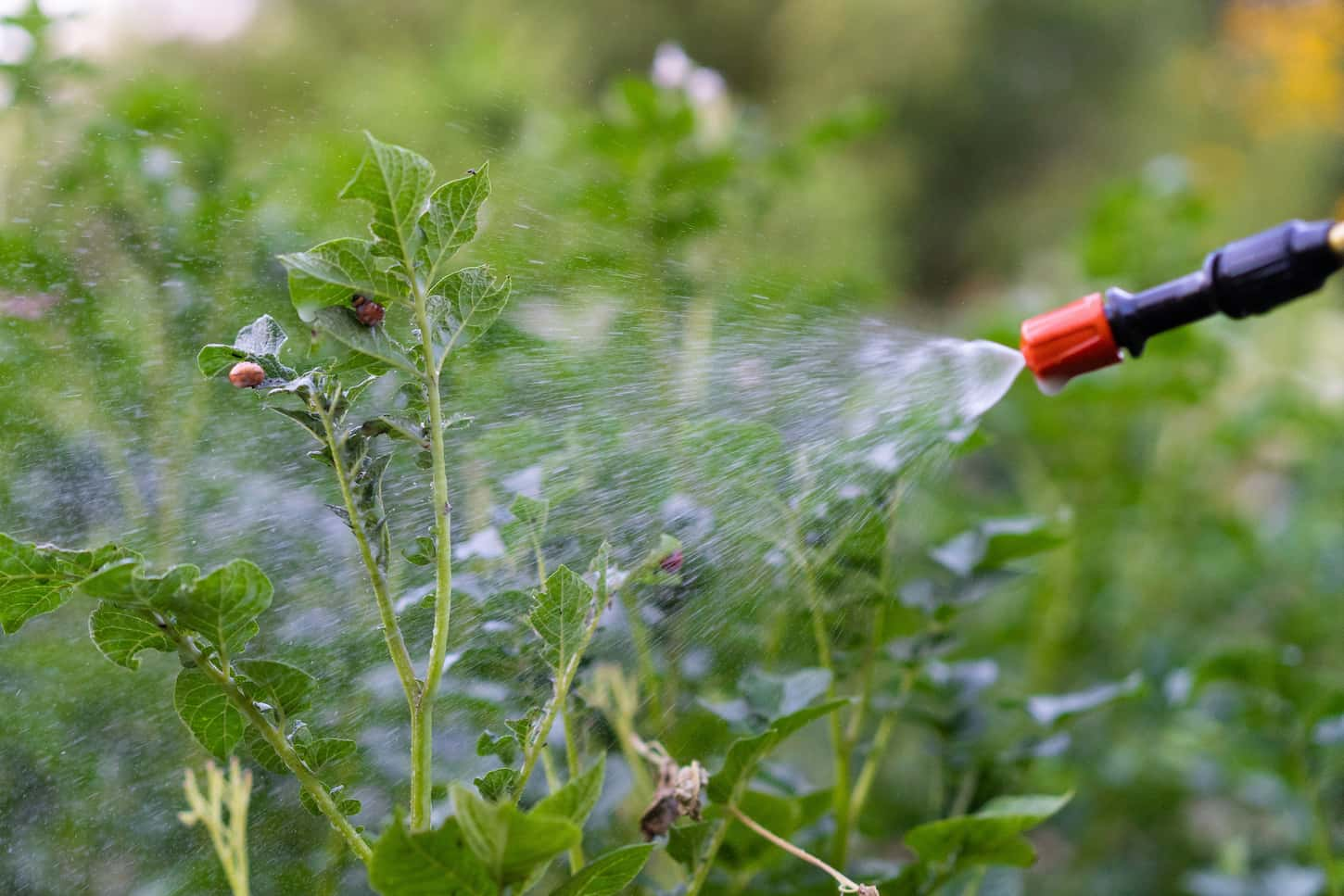
How Do You Protect Fruit Trees from Pests?
Prevention is key for protecting fruit trees from pests. Learn what variety your fruit trees are and call the local extension office to find out what pests to watch out for. By using pesticides and cleaning up dead leaves and fallen fruit, insects can be effectively controlled in the orchard.
Here are some additional tips that will help with pest management and disease control:
Tip #1: Spray Pesticide at Low Wind Velocities
When using pesticides, it’s important to be careful that this chemical product stays on the intended target. Spray drift is the airborne movement of pesticide from the intended site to outside areas. Failure to prevent spray drift leads to crop damage, harm to humans, and pollution.
Spray pesticide when there is low wind velocity since this will reduce chemical drift. Morning and evenings are the best time. Make sure to read product labels; some products specify what time of the day is ideal for safe application.
Wear protective goggles, gloves, and face shields while mixing the chemicals and spraying. Spray drift can be reduced by using drift-reducing nozzles – these can be found online and at gardening stores.
Tip #2: Mix only the amount of pesticide you need for a session
When mixing or diluting the pesticide, make sure the room is well-ventilated or do it outside. Don’t mix more than the amount needed for an application.
Remember that the bigger the fruit tree is, the higher the amount of water will need to be for adding to the mixture. Check the label of the pesticide for the adequate amount of pesticide to add per liter of water. For best results, spray each fruit and leave thoroughly.
Tip #3: Only use plastic spiral mouse guards if needed
Plastic spiral mouse guards help safeguard fruit tree trunks against damage caused by rodents. However, they can quickly become a refuge for trunk-boring insects if they aren’t removed in the summer.
Another efficient way to protect a fruit tree from rodents and insects is by using white latex paint and 18 inches of galvanized hardware cloth. Paint the tree trunk with the paint and let it dry. Then wrap the trunk with the cloth. This type of guard can be left on throughout the growing season.
Tip #4: Encourage the insects’ enemies
Insects have natural enemies that will help minimize the destruction of plants. These enemies are also referred to as biological controls.
The examples below show how to safely control pests in the orchard or garden through conservative biological controls:
Birds and Rodents: Hawks and owls in the area curb the damaging effects of birds and rodent populations in the orchard. Keeping the yard in good condition and providing a reliable source of water can attract them to the area.
Employing the use of visual scare devices, such as balloon products or kites bearing the image of a hawk, or an owl can keep them at bay temporarily. However, birds get used to these scare devices fast, so do not use this device as the only control method.
Insects: Aphids, scales, and mites can be kept in check by parasitic wasps, aphid lions, ladybugs, praying mantis, and ground beetles. Planting ground covers near fruit trees can help conserve these helpful insects.
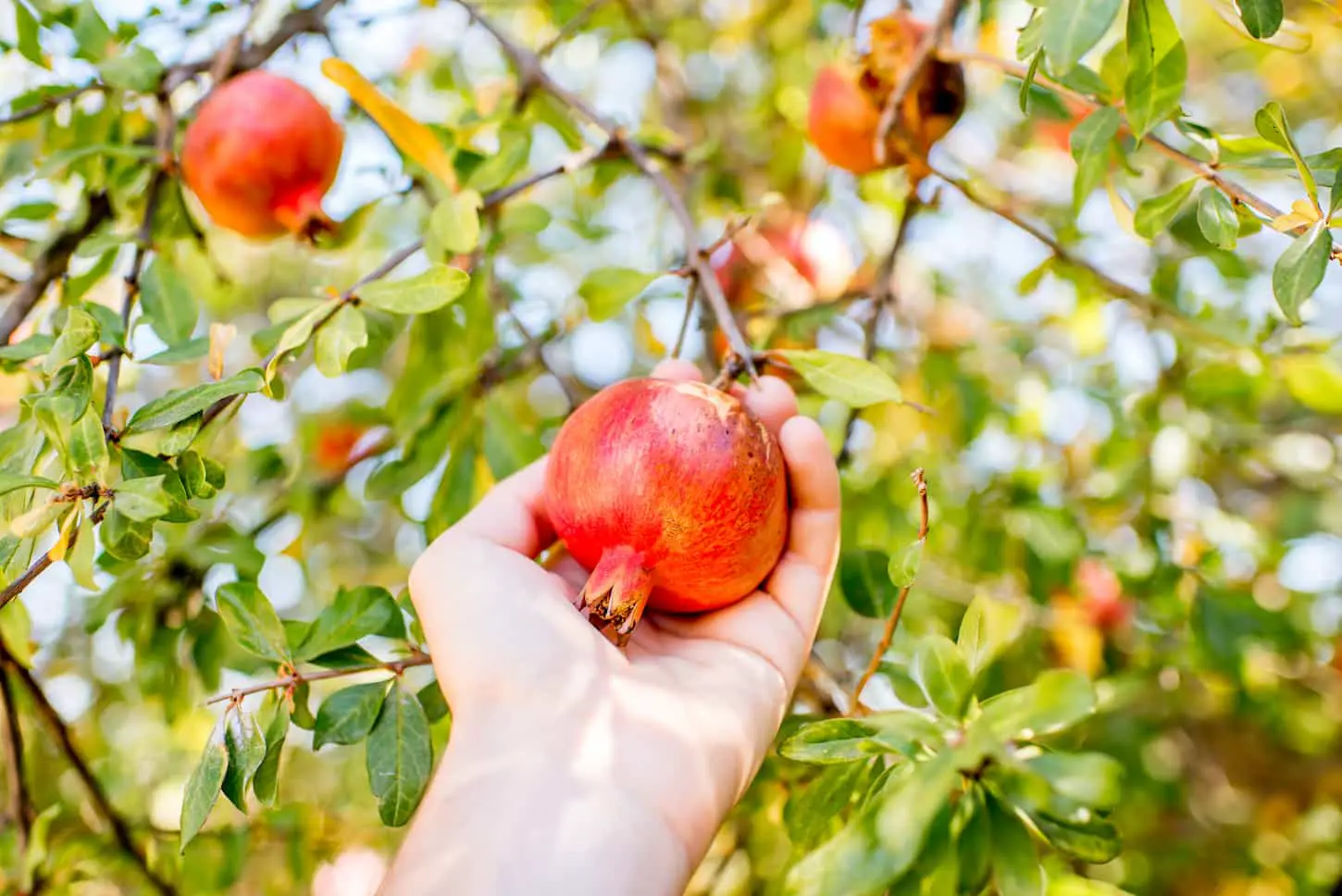
Why Are My Fruit Trees Unproductive?
There’s nothing more disheartening than finding out your fruit trees are unproductive. No fruit or little fruit on the fruit trees could be a result of pollination problems, pruning errors, poor soil conditions, or pest attacks.
If having to deal with these issues, here are some helpful tips that will improve things for fruit trees.
The biggest tip is to ensure the soil pH is suitable for the type of fruit tree.
Ever wonder Do Fruit Trees Really Grow Better in Pairs? Here’s my answer for you!
Use a pH test strip to check the soil – if the results indicate a pH level that is not suitable for the tree you are growing, here are some suggestions to achieve the correct pH balance:
Tip #1: How to raise and lower soil pH
It is a good idea to learn how to adjust the soil pH in the garden to help the fruit trees grow healthy and strong. Here are some quick ways to adjust the pH without going crazy:
How to raise soil pH (make it more acidic)
Crushed eggshells, aragonite, or oyster shell flour can be used to raise soil ph. Lime can also help increase soil acidity and improve phosphorus and calcium availability, but too much of it can slow down the trees’ ability to absorb potassium and magnesium.
For immediate acidity of the soil, add fluid or pelletized lime to the soil.
Potassium carbonate is a great substitute for lime. It can be integrated into the irrigation system; it will raise the pH level quickly. Wood ash is also another material that can be used in place of lime, and it can be used to raise soil pH in sandy soil.
How to lower soil pH (make it more basic)
Manmade fertilizers such as ammonium sulfate and aluminum sulfate can quickly lower the pH level of the soil. Organic materials such as peat moss, treated manure, green manure, compost, alfalfa meal, pine needles, and elemental sulfur will also lower the pH of the soil.
If the soil is copper deficient, add copper sulfate with citric acid to fix it. The pH level of alkaline soil can be lowered with diluted citric acid or vinegar. Seaweed can also be used but it needs to be mixed with either powdered or liquid fulvic and humic acid to work.
Here are some more tips to keep in mind when adjusting the pH of your soil:
- Add soil correction to the surface of the soil if trying to improve the soil after the fruit trees have been planted.
- Powdered materials work better when they are liquified – apply the mixture the same way as when making use of liquid fertilizer.
- Avoid direct contact or application on leaves and roots.
- Conduct soil tests regularly to monitor the progress of the soil.
Tip #2: Try bending the fruit tree’s branches
Bend branches that are upright or above 60° from horizontal with weighted clothespins, small weights, or toothpicks. This practice should be implemented in your fruit tree care routine as early as the first to the second year of the fruit tree’s growth; at this stage, they are super flexible.
Branch bending should also be done under warm weather conditions because fruit trees grow quicker under these conditions and are less stiff. Older fruit trees are more difficult to manipulate, so be careful when trying to bend their branches or they will break.
You can hold each bent branch in place with a spreader or tie. The material of the tie should be wide so that it doesn’t dig into the bark of the fruit tree and cause damage. The ties need to stay in place for at least 8 growing seasons before the branches will stay in place.
Training the branches is part of espalier pruning, which I cover more right here: Can You Prune Fruit Trees in Summer or in the Fall?
Fruit trees like plums and pears, are quite brittle and should be bent slowly and gently. Additionally, branch bending prevents branches from growing so quickly that they overshadow the leading branches.
Tip #3: Change unfavorable planting positions
Planting your fruit tree in a low spot where air circulation is dismal can lead to the death of flower pistils and low fruit production. It isn’t advisable to grow fruit trees in low areas because this position can quickly get cold – this is especially harmful to trees when they are in full bloom.
A spot near the side of a hill or that is elevated would definitely help the fruit trees produce more fruit due to better air circulation.
Tip 4: Do not spray insecticide on blooming trees
If the type of fruit tree needs cross-pollination to produce fruit, avoid spraying insecticide on it when it’s blooming. Pollination depends on the transfer of pollen from one flower to another by bees. So, spraying the fruit trees when they are in bloom can render them unproductive.
There is minimal effort required to encourage bees to come into the garden. If there are a lot of flowers around, then these insects will most likely venture into your yard.
Lack of bee activity could be because of bad weather conditions, such as strong winds or cold temperatures. The fruit trees might have a lower production year as a result.
Are your trees blooming too early? Read my article on How To Keep Fruit Trees From Blooming Too Early.
Tip #5: Change mulch materials
Mulch (like sawdust and woodchips) with a high carbon to nitrogen ratio can lead to nitrogen loss in fruit trees, which can further lead to unproductivity. These materials require bacteria that use nitrogen to break down – which deprives the fruit trees of this very essential element.
Using different mulch materials is one way to tackle this problem. However, these materials can be composted until they decompose, although it takes about a year for sawdust to break down. Another way to solve this problem is to add water-soluble fertilizer with nitrogen to balance the soil out.
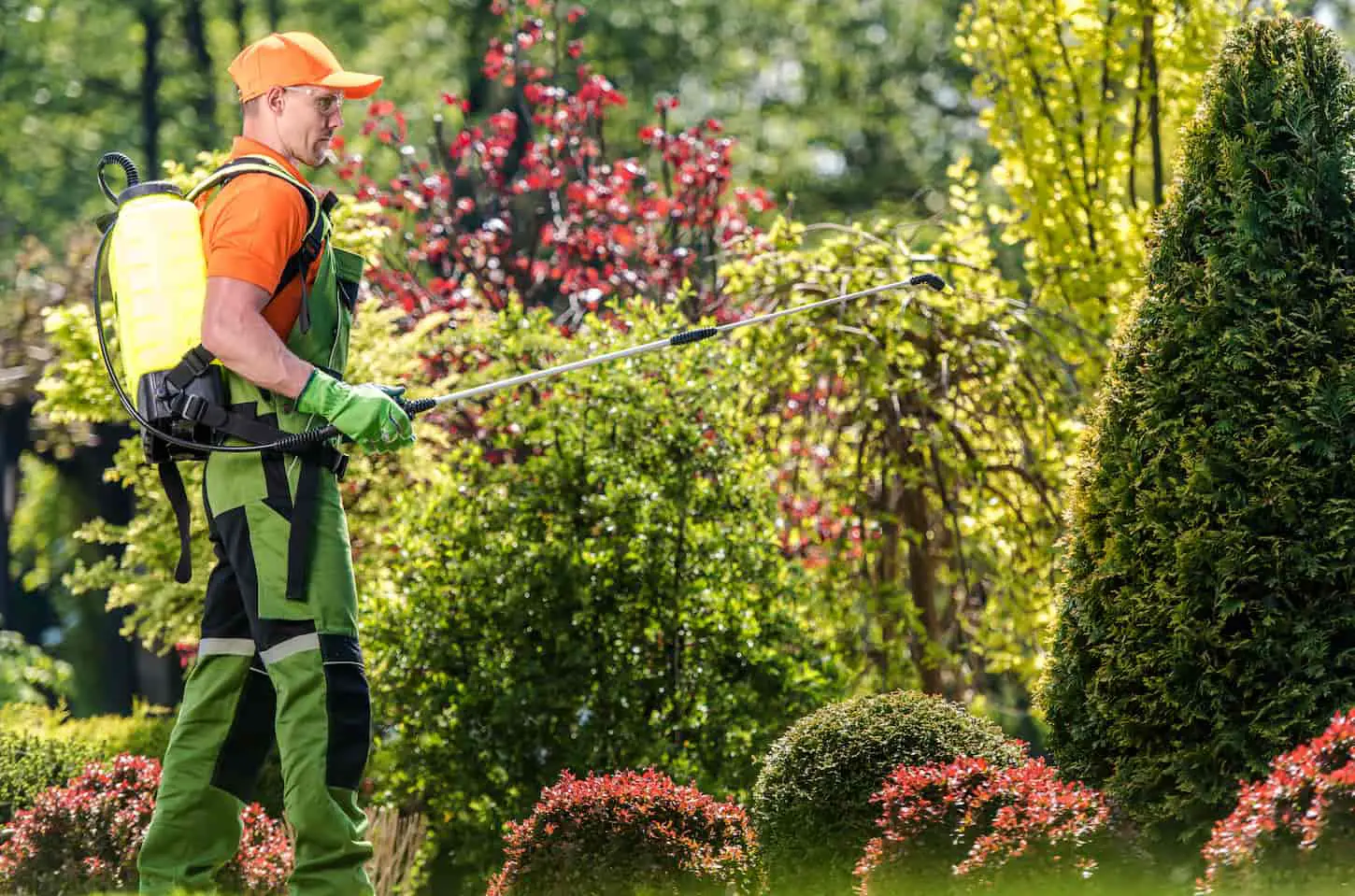
Which Fertilizers are Best for Fruit Trees?
By applying fertilizer with a nitrogen level significantly higher than its potassium and phosphorus content, it will boost the growth of the fruit tree. Favorable growth outcomes from fruit trees can be achieved by implementing fertilizers with specific nutritional properties into the soil.
For example, 2 to 3 years after planting trees, fruit production isn’t really expected just yet. The focus is on the fruit tree attaining a mature height.
Tip #1: Use specific fertilizer formulations to get positive growth outcomes
After fruit trees reach a mature height, focus on developing the roots by applying fertilizer with a nitrogen level lower than its potassium and phosphorus content. The best time to fertilize fruit trees is in spring.
Make sure to read the label of the fertilizer to help guide the application. Additionally, a soil test can help direct fertilizer application.
The test will provide all the information needed for which nutrients are in excess or in short supply. Watering fruit trees immediately after fertilization helps ensure that nutrients travel down the soil.
Tip #2: Use nitrogen fertilizer conservatively
Fertilizers rich in nitrogen do a great job in boosting growth, but they do make fruit trees more susceptible to diseases. Nitrogen fertilizer should be used cautiously. For winter, it’s best applied to the soil before June.
A fruit tree’s age and size determine how much fertilizer will be needed:
- During the first few years, ½ ounce of nitrogen is required for trees to grow well. To get ½ ounce of nitrogen, make use of a fertilizer that contains about 10% nitrogen. This fertilizer should be applied at a rate of 5 ounces.
- Mature semi-dwarf fruit trees require 3 ounces of nitrogen fertilizer in a circle about 3 feet wide around the tree.
- Dwarf apple trees require only 10 ounces of fertilizer that contain 10% nitrogen.
- Sweet cherries grow vigorously and should be fertilized cautiously or not at all.
Failure to apply nitrogen fertilizer on time can cause late-season growth. This will prevent your fruit trees from gaining winter hardiness, which can lead to unproductivity or death.
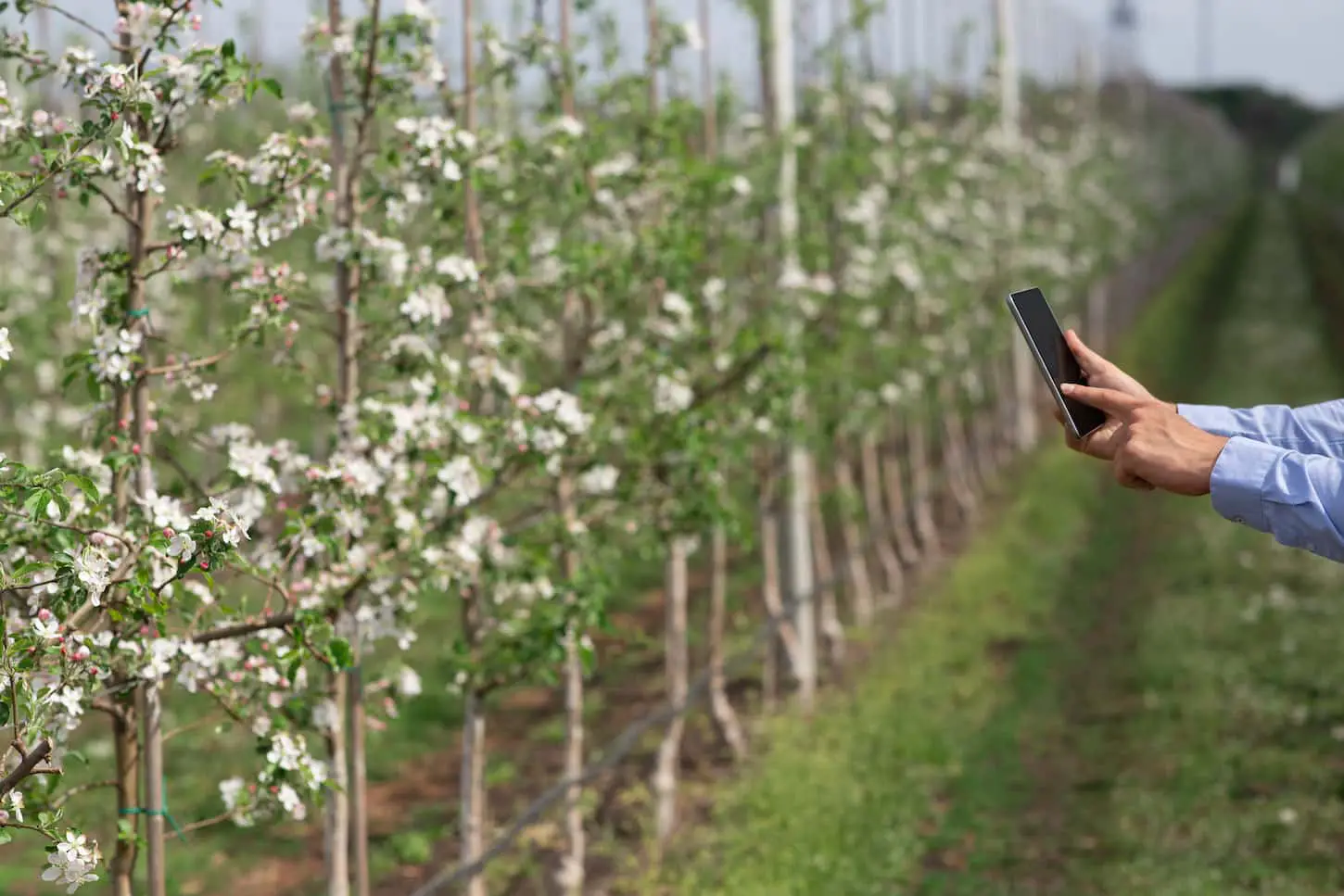
Key Takeaways
Before setting out to grow fruit trees, it’s important to carry out thorough research on the type of trees that are interesting. There are general guidelines that apply to all fruit trees – each fruit tree has something distinct about it that makes the care routines unique for each tree.
We hope we were able to cover all the essentials of caring for fruit trees. With the tips provided here, we aim to make home fruit tree planting an easy and successful one. It might seem like there is a lot of work involved, but the good thing is there are fruit tree varieties that aren’t very time-consuming to maintain.
So, if you love the idea of having a fruit tree of your own but hate all the effort the maintenance requires, get a fruit tree that’s easy to care for like a cherry tree. Or better yet, grow the fruit tree in a container.
Besides enhancing the property and providing delicious produce, fruit trees help slow down global warming and the greenhouse effect. As lovely as these trees are, they have both pros and cons.
Fruit trees can attract animals or insects to the yard. Trees take up a large amount of space and can be messy. So, make sure to think it through before heading out to purchase a sapling.
Next Steps
For further information on fruit trees and what it takes to care for them, here are some more articles I wrote on this subject.
- How to Fertilize Fruit Trees with Epsom Salt
- How to Plant Citrus Trees: the Soil, Spacing, Light, & Food
- 40+ Reasons Your Fruit Trees are Dying (with Fixes)
No matter which of those you pick, you’re in for some good reading. Enjoy!
Resources
Learning from your own experience is essential, but learning from others is also intelligent. These are the sources used in this article and our research to be more informed as homesteaders.
- “Fruit Gardening.” Cornell University, moodle.cce.cornell.edu/pluginfile.php/56859. Accessed 29 Dec. 2021.
- Cooperative Extension. “Growing Fruit Trees in Maine – Cooperative Extension: Tree Fruits – University of Maine Cooperative Extension.” Cooperative Extension: Tree Fruits, University of Maine, 18 Apr. 2017, extension.umaine.edu/fruit/growing-fruit-trees-in-Maine. Accessed 29 Dec. 2021.